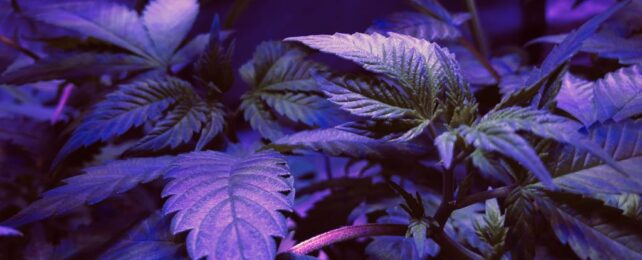In the search for extraterrestrial life, scientists already know that we might be looking for a world that's very different from Earth's verdant, plant-dominated biosphere.
Exactly how different is hard to know, but our own planet can still offer us some clues. There are, for example, organisms that can live in environments very inhospitable to most other life on Earth.
But what would an alien equivalent of plant life look like?
Well, life here on Earth offers another possibility for that, too. While a significant proportion of producers here contain green-hued chlorophyll for survival, photosynthetic bacteria that thrive in low-light conditions tend to be colored purple to make the most of infrared radiation.
"Purple bacteria can thrive under a wide range of conditions, making it one of the primary contenders for life that could dominate a variety of worlds," says astrobiologist Lígia Fonseca Coelho of Cornell University's Carl Sagan Institute.
"They already thrive here in certain niches. Just imagine if they were not competing with green plants, algae and bacteria: A red sun could give them the most favorable conditions for photosynthesis."
The most abundant stars in the Milky Way galaxy are not like the Sun; rather they are smaller, redder, emitting significantly less heat and light than our own star. Up to 75 percent of all stars in the galaxy are red dwarf stars, which leads scientists to speculate whether life can emerge on a red dwarf exoplanet, what it might look like if it did, and – most importantly – how we could detect it.
The Carl Sagan Institute has been on a quest to catalog different forms of life, and work out what they might look like from afar if we were viewing them on another world.
Here on Earth, the photosynthetic pigment seen most often in plants is chlorophyll-a. This is also found in cyanobacteria, which is no accident. The chloroplast in plant cells that contains the chlorophyll pigment is actually a symbiotic cyanobacteria that was taken up into the ancestors of modern plants a long time ago, and co-evolved to allow their hosts to photosynthesize.
Around a star with different light conditions, a life form with a very different hue might rise to dominance in a similar fashion, so Coelho and her colleagues collected more than 20 species of bacteria which use biopigments called carotenoids to harvest light energy.
These organisms thrive on red and infrared light, using light-harvesting systems are somewhat simpler than those seen in plants, using bacteriochlorophylls that absorb wavelengths of light not used by plants or cyanobacteria and don't produce oxygen.
The researchers carefully measured the pigments of the different bacteria, and created models of alien worlds with different surface and atmospheric conditions, to determine what they would look like. In all cases, the bacteria caused the planet to produce intense hues that could potentially be detected.
Depending on the species of bacteria, carotenoids may make the microbes look more orange, red, or brown. Yet just as variation among plants and algae still blurs into forests, grasslands, and mangroves of stunning greenery, a spread of cooler hues further down the electromagnetic spectrum could still represent some form of photosynthesis.
This means that, if another world evolves a rich covering of life that has similar biology to the purple bacteria here on Earth, we have a means for spying it out.
"We are just opening our eyes to these fascinating worlds around us," says astrobiologist Lisa Kaltenegger, director of the Carl Sagan Institute. "Purple bacteria can survive and thrive under such a variety of conditions that it is easy to imagine that on many different worlds, purple may just be the new green."
The research has been published in the Monthly Notices of the Royal Astronomical Society: Letters.
